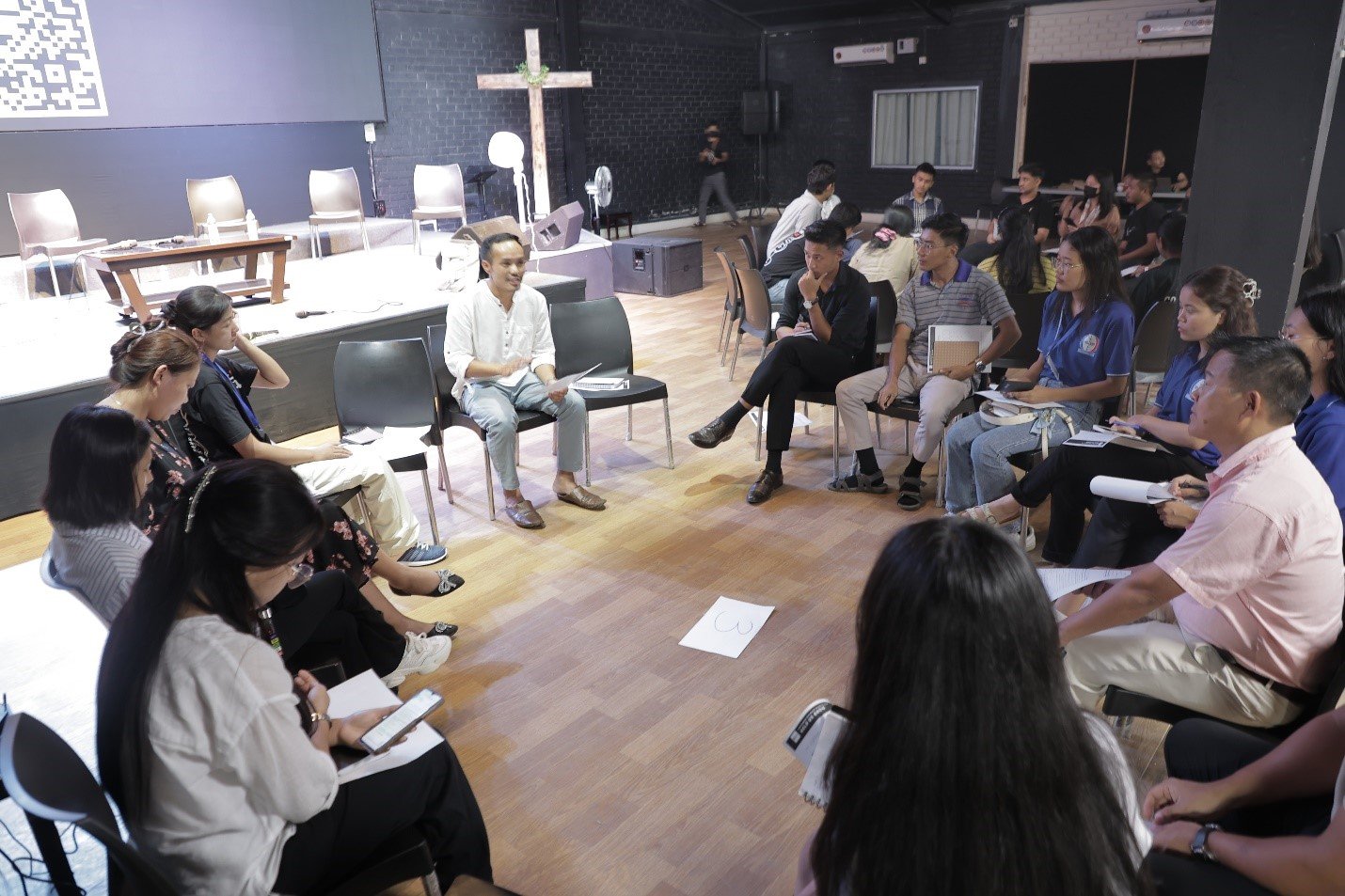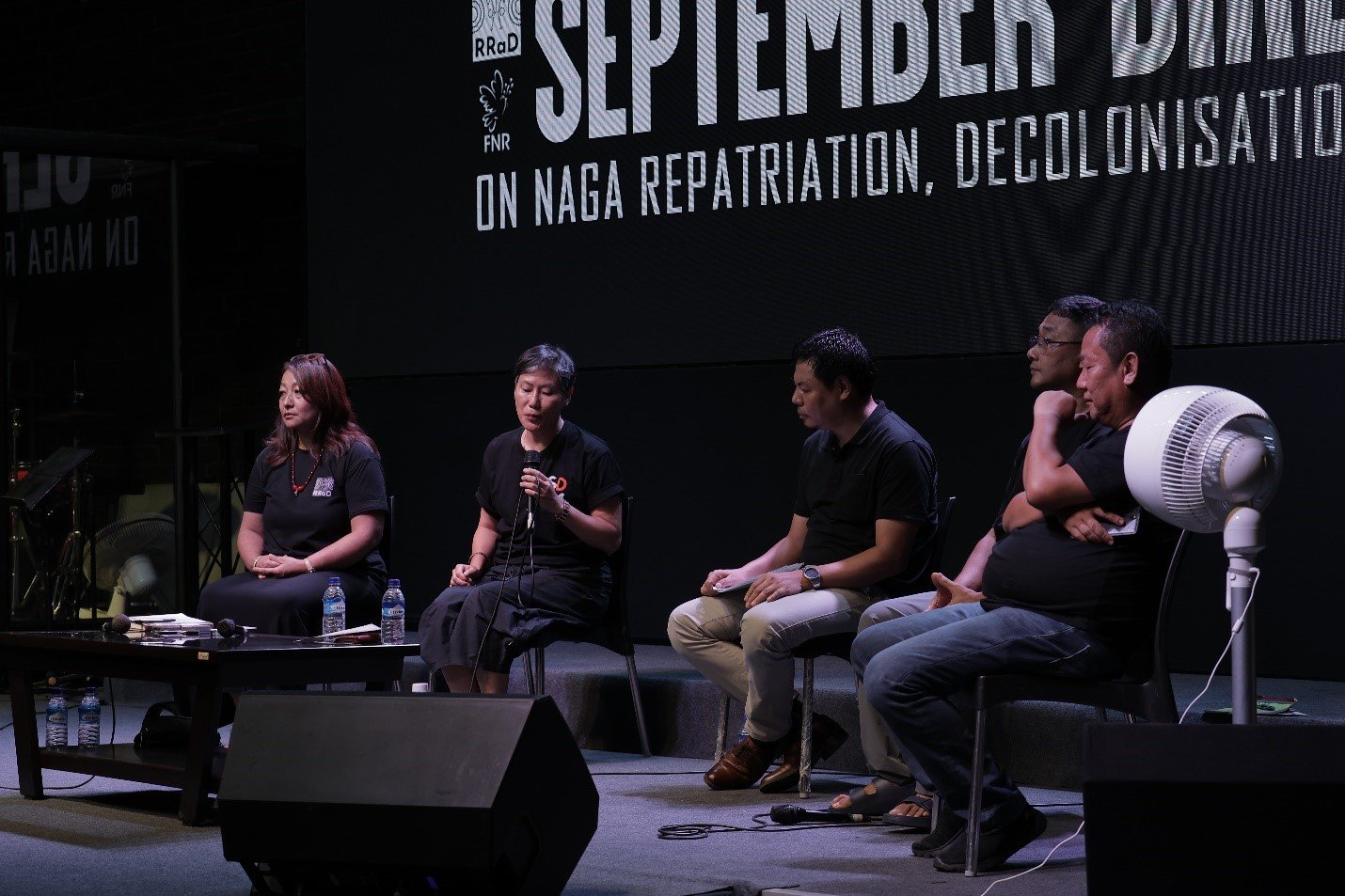The issue of repatriation of Naga ancestral human remains from the Pitt Rivers Museum, Oxford, UK has come as a point of intervention for the Nagas. For two days, dozens of Nagas have engaged on issues of ‘repatriation’, ‘colonisation’, ‘decolonisation’, ‘trauma’, ‘healing’ and ‘reconciliation’ at the Lighthouse Church, Dimapur.
Convenor of the Forum for Naga Reconciliation, Rev. Dr. Wati Aier, in his address to participants at the “September Dialogue on Naga Repatriation, Decolonisation and Healing” on Friday, shared that repatriation offers Nagas “the chance to talk about the history of colonialism and its power, mourn the dead, and reconcile with the past in an effort to muster truth and justice.”
Dr. Aier could not join the conference owing to commitments overseas but had his speech read out. In the speech, the reverend was resolute that the dead must be remembered and honoured according to customs and culture. “In this act, the living Nagas have a sacred role in the cultural imperatives of last rites and its meaning for the living and in the flourishing of living communities,” he maintained.
‘Intergenerational dialogue’
The dialogue, organised by the Forum for Naga Reconciliation-Recover Restore and Decolonise (FNR-RRAD), is envisioned as an inter-generational platform for collaborative deliberations and discussions that support an environment to consolidate the repatriation initiative. At the dialogue, the participants comprise of college students, academics, professionals, activists, theologians, elders, and community leaders.
Dr. Visier Sanyü’s storytelling session on Friday found particular liking among young college students. Dr. Sanyü, an elder of the FNR, went on to narrate his ordeal of fleeing from the Indian army’s atrocities after their village (Khonoma) had been burnt down in the late 1950s, and how growing up, his family had to grapple with starvation.
“I really liked his story,” Himshen Chipen, a student of Patkai Christian College says. “He brought out such vivid details and we can only imagine what they underwent,” she quipped.
Dr. Sanyü also paid homage to the villagers of Matikhrü of the Pochury Nagas, recalling one of the most notable massacres by the Indian army on September 6, 1960. On this day, the 16th Punjab Regiment brutally tortured the men in front of their wives and children; nine men were beheaded and their bodies set ablaze and burnt beyond recognition.
Stories of villages being razed, villagers tortured and even raped were common in the aftermath of the Indian government’s militarization of the Naga Hills in 1950s. But history textbooks in schools and colleges make no mention of these atrocities. It is little wonder then, that Dr. Sanyü’s story was an eye-opener for young college students. “We did not know or imagine it was like that,” Grace Ezung, a tad shaken, says.
Dr. Phyobemo Ngully, another FNR elder, insisted that it was time for the Naga people who have lived through intergenerational conflict and militarisation to address the chain reaction of the generational trauma.
Dr. Ngully, a retired psychiatrist, states that people with intergenerational trauma have been found to suffer from a sense of loss, brokenness, disempowerment etc. He contends that Nagas are living with much ambiguity and uncertainties, which has in turn eroded their humanity. “No wonder, we are unable to recognise and appreciate each other’s capabilities and potentialities,” he underscored, viewing that the success and achievements of others turn into a threat rather than an inspiration.

‘Rebuilding ties’
For Dr. Aier, the possible repatriation of the ancestral remains can be an ‘occasion’ for rebuilding social structures, kinship ties, and community cohesion. “The return of our ancestral remains to their homeland enables each cultural group to reconnect with their cultural heritage and practices in a transformed and refined manner,” he says.
Through the repatriation process, the reverend hopes that historical injustices, hurt, and anger will be acknowledged, addressing past wrongs, and ultimately arrive at reconciliation. As such, Rev. Aier called upon Naga elders, leaders, and conscientious public to participate in the repatriation process by considering the psychological, political, and cultural aspects of repatriation.
Dr. Aier insisted that the ancestral remains be accorded proper last rites according to cultural norms. “We must honor the dead ones to rest in peace in order for the present generations to be released from the haunting sense of the restless Naga soul,” he asserted.
‘Many challenges’
Speakers at the conference reiterate that the repatriation process will entail a long-term commitment and perhaps even persist for decades, citing examples of the Maoris of New Zealand. At the concluding session on Saturday, Dr. Aküm Longchari reminded the gathering that the people’s active and informed participation in the dialogue was essential in developing a Naga response to repatriation. He emphasised that the people must take ownership of the process.
“What is the need for repatriation at this point?” a participant questioned, rather discreetly. “I don’t see the need for bringing the remains back,” he said, as another young participant nodded in agreement. Yet another participant, a youth pastor from a Church, shares that a tribal theological framework needs to be developed if the repatriation process is to go ahead.
Songaror Horam, a 20-year old student, voices support for the initiative saying repatriation is not just bringing back the ancestral remains from abroad. “It is our root. And if we sever that root, can we even exist as a people?” he questions.
Dr. Longchari pointed out that the repatriation process is not happening in a vacuum but within the present existential realities and challenges faced by the Naga. He asserted the need to view repatriation as a process, a means, and not as an end or outcome. He further added that, out of the process, Nagas will have many encounters and challenges, which in turn will provide opportunities to find holistic responses and resolutions. “It is here that we are trying to journey together… looking for a process that will enable us to find a way forward,” he stated.
Read more: September Dialogue: Creating a pathway towards the future


